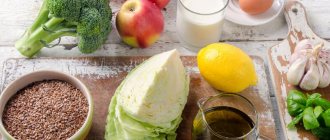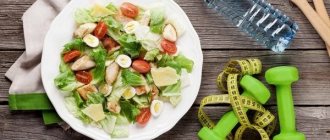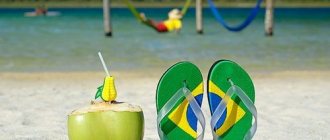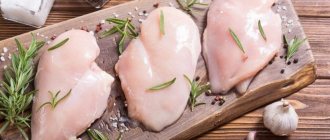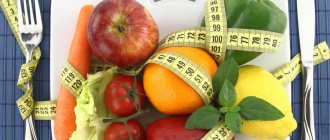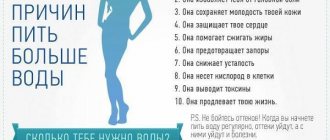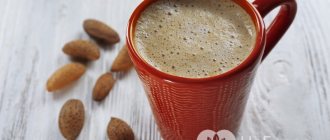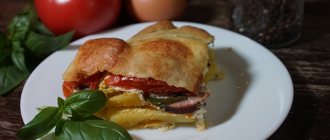Nutritionists recommend pineapples, avocados, chia seeds and other exotic products, which in our latitudes are found in supermarkets and never in gardens, forests or vegetable gardens. Therefore, the desire to adhere to an exotic diet results in expenses for which you can live for a month in the place where suppliers bring these same avocados and pineapples. Fortunately, there is a diet adapted to northern latitudes that suits a moderate budget. It is called the “Nordic”, “Norwegian” and even the Viking diet. But its most common name is the Scandinavian diet. Klaus Meyer is considered the creator of the Scandinavian diet. He is not a doctor or a nutritionist, but a restaurateur from Copenhagen. In 2004, Meyer noticed how demand for nutritional supplements and processed foods had increased. He convened a symposium of restaurateurs, which resulted in a manifesto for new Nordic cuisine. The manifesto argued that Scandinavia provides its residents with enough healthy and tasty products, and no matter how attractive exotic and semi-finished products are, it is worth popularizing its own, healthy and inexpensive products. Based on this manifesto, nutritionists at the University of Copenhagen developed the “New Scandinavian Diet,” which is now in demand all over the world.
General rules
The only way to get rid of excess weight without harming your health is proper nutrition.
The Scandinavian diet, as a healthy diet, appeared relatively recently and has been gaining popularity recently. It can be considered as a Mediterranean diet adapted to northern living conditions. For residents of Norway, Sweden and Denmark, it is closer than the Mediterranean one, since it is based on eating food native to the area and using only natural products. It brings naturalness, simplicity and all the benefits of local products. In terms of effectiveness, this diet is not inferior to the Mediterranean diet and has found its adherents - lovers of a healthy lifestyle and those who want to lose weight, without observing strict dietary restrictions. It normalizes fat metabolism and helps reduce cholesterol . The Scandinavian diet is loved for its wide variety of foods.
The Norwegian diet, compared to the Mediterranean diet, allows the consumption of carbohydrate foods daily (porridge, bread). But at its core, it is a protein diet, which involves an unlimited amount of protein in the diet, so against their background it can be considered low-carbohydrate. The advantage of this nutritional method is that the amount of carbohydrates is not sharply limited: the diet includes bread, potatoes, and cereals, which are often excluded in classic low-carbohydrate diets or are present in minimal quantities. Excess protein is not always good for the body - it creates an increased load on the liver and kidneys. This diet also reduces the amount of fat consumed.
Initially, when developing the diet, the goal was not to create it for weight loss - simply to offer a healthy diet that residents of northern latitudes could adhere to. When testing the diet, a group of volunteers was recruited and they were divided into two groups. One group ate processed and crushed grains, sweets and sugar. The other was fed according to the new system. It should be noted that in this group of volunteers there was a decrease in weight (three or more kilograms over six months), and the blood pressure and function of the cardiovascular system also normalized.
If the Norwegian diet is used for initial weight loss, it should be followed for up to a month. But it is better to follow it longer (several months) and extend it to the stage of maintaining the achieved result. Only then does the diet need to be modified: reduce the protein content and increase the amount of carbohydrates. Women on the Nordic diet should consume 1,500 calories, while men should consume 1,800-2,000 calories. Weight loss is 3-5 kg per month. This caloric intake does not require fasting and making special efforts to comply with it. On the contrary, it allows you to enjoy healthy and tasty food.
The diet's main foods are rich in:
- dietary fiber, stimulating digestion and natural bowel movements;
- vital fatty acids necessary for the normal functioning of the cardiovascular system;
- antioxidants of vegetables and wild berries;
- proteins that are necessary to maintain muscle mass and human health in general.
The daily diet menu includes:
- 50% plant products;
- 25% fish (meat and game);
- 20% whole grain products (porridge and healthy bread);
- 5% vegetable fats and dairy products.
The Northern diet gives general recommendations on the choice of foods, and the issues of portion size and frequency of meals should be decided by the person himself, depending on the goal set - to lose weight or get healthier. The main thing is to enjoy not the volume of dishes, but the taste and aesthetics of their design.
Based on this, we can summarize the basic rules of the diet:
- Switch to home-cooked food.
- Consumption of natural products, free of preservatives, dyes, sweeteners and flavor enhancers.
- Don’t torture yourself by fasting, but don’t overeat either. Eat small portions of 200-250 grams 4-5 times a day. It is especially harmful to overeat at night - if you are very hungry, you can drink milk or kefir.
- Increase your consumption of protein foods (fish and lean meat, low-fat dairy products).
- Introduce seasonal vegetables and fruits, use greens and herbs more widely, while simultaneously limiting salt intake.
- Be sure to include porridge made from whole grains into your diet, and do not completely give up bread and pasta made from durum wheat flour.
- Replace animal fats with vegetable oils (olive, sunflower, rapeseed, flaxseed).
- Exclude semi-finished products, products made from white flour, fast food, and confectionery.
- If you want to lose weight, alcohol is also excluded.
Flaws
Most nutritionists consider the Nordic nutrition system for weight loss to be one of the most successful, because it has a minimum of disadvantages. The few disadvantages of the northern diet include:
- Low rate of weight loss - you can lose only 3-4 kilograms in a month.
- The system is categorically not suitable for vegetarians and allergy sufferers.
- Due to the large amount of protein in the Norwegian diet, people with kidney failure are also contraindicated to lose weight using this system.
- Without moderate physical activity, the technique is ineffective - weight loss occurs very slowly and almost imperceptibly.
Authorized Products
- Fish and seafood are the basis of the diet. The most useful fish is that caught in the northern seas - it naturally accumulates more omega-3 fatty acids (salmon, herring, mackerel, salmon), which are necessary for the prevention of diseases of the cardiovascular system, especially atherosclerosis . In the background is less safe, caught in natural reservoirs, and not grown on farms. It is recommended to replace most meat dishes with fish and seafood and include it 4-5 times a week, not to mention the fact that various fish can be included in snacks and sandwiches. Fresh or canned fish is widely represented on the Norwegian menu. Soups and hot dishes are prepared from fresh water. Smoked and canned fish are served with boiled eggs and used as snacks. Sandwiches with fish and boiled eggs are the main assortment of the Norwegian table. Herring is most often pickled. Of course, all the benefits come from freshly caught and chilled fish, which is abundant in these countries. In our conditions, we will have to be content with frozen products, which, when subjected to strong cooling, lose some of their beneficial properties. If you buy chilled fish, then the Nordic diet for constant nutrition will be very expensive. As an alternative, you can use inexpensive types of fish (hake, pollock, tuna, pike perch, cod), again frozen.
- During a strict diet, the meat should be wild animals - venison and elk or game (partridge). The meat of wild animals is certainly environmentally friendly, but in our country they are expensive delicacies. As an alternative, you can eat chicken, beef, and turkey. They are also low in fat, high in protein and relatively low in calories. This point is very important for those who want to lose weight and stay at a normal weight. But the meat of wild animals differs from the meat of animals and birds fed with compound feed, which will, to a greater or lesser extent, contain fats, cholesterol and artificial additives. Meat dishes can be in the diet no more than 2 times a week.
- Vegetables. As you know, seasonal foods grown in your area are the most beneficial. For Scandinavia, these are root vegetables (carrots, parsnips, potatoes, beets, parsley root, turnips, radishes, Jerusalem artichokes), as well as all types of cabbage, which are rich in fiber and antioxidants. The Norwegian diet often uses nettle, parsley, dill, rhubarb and moss. There is no need to go to extremes and you can stick to vegetables grown in your region. Brussels sprouts and other types of sprouts, spinach, beets, legumes, leafy greens, pumpkin, carrots, and salads are quite suitable. Cabbage is a valuable dietary vegetable because it has low calorie content; you can prepare many delicious dishes from it, which, in combination with meat or fish, will provide long-lasting satiety. You can prepare salads, stewed, boiled and baked dishes from vegetables. Broth made from Brussels sprouts is beneficial, and regular consumption reduces the likelihood of cancer.
- The main ingredient in desserts from Scandinavian cuisine is berries. They are consumed soaked, dried and frozen all year round. Healthy fruit drinks are made from raspberries, blueberries, blackberries, blueberries, lingonberries, and cloudberries. Berries are added to fish and meat dishes, sauces, and fresh or frozen - served as dessert and added to porridge. Soups are made from the berries. Summer strawberry-rhubarb and strawberry-blackberry soups with cream are famous. Of course, wild berries are a source of vitamins, minerals, and flavonoids, which provide antioxidant protection for the body. If you can’t enjoy a large assortment of berries, blueberries and cranberries are more accessible and can be eaten all year round, dried or frozen.
- Mushrooms. Preference is also given to wild mushrooms. This product is rich in proteins, tasty and low in calories. Neutral taste allows use with various vegetables, eggs, fish and meat.
- Cereals. Give preference to whole grain cereals due to their high fiber content: pearl barley, bran, spelt, rye and barley bread, whole grain bread, brown rice, green buckwheat. All these products have a beneficial effect on digestion. Unmilled grains are digested more slowly and do not cause the risk of diabetes and obesity . The traditional type of bread for Norwegian cuisine is rye bread. If the goal is weight loss, porridge should be limited to one serving per day for breakfast, the same applies to bread - 2 slices of healthy bread per day.
- Eggs in any form: boiled, fried with vegetables and mushrooms, omelettes.
- A special feature of Scandinavian cuisine is the use of milk and dairy products. But these peoples consume sheep and goat meat, which are considered more valuable in terms of vitamins and nutrients than cow meat. Products made from sheep's milk have a specific smell, so not everyone will like them, and they are also much more expensive than those made from cow's milk. Therefore, sheep's milk can be replaced with cow's milk. It is better to buy dairy products from farmers. Having made such a replacement, you most likely should not count on the health-improving effect that comes from consuming sheep’s milk and its products.
- Nuts as a source of polyunsaturated and monounsaturated fatty acids, protein and folic acid . Any type of nuts can be used in salads, with cottage cheese, and also for a snack.
- Vegetable oil. In the Nordic countries, rapeseed oil is a staple vegetable oil, like olive oil in Mediterranean cuisine. Both oils contain high amounts of unsaturated fat. But it is in this oil that omega-3 and omega-6 are in the optimal ratio for the body of 1:2. As for saturated fatty acids, rapeseed oil contains 6%, and olive oil - 14%. Rapeseed oil contains vitamin E , A , group B and microelements (calcium, phosphorus, zinc, copper, magnesium). Since rapeseed oil is not common in Russia, in our case you can prefer to choose olive, flaxseed, and sesame oil. If you do use rapeseed oil, you need to be sure of its high quality (the content of erucic acid , which is not broken down in the body, should be no more than 0.2%).
Table of permitted products
| Proteins, g | Fats, g | Carbohydrates, g | Calories, kcal | |
Vegetables and greens | ||||
| greenery | 2,6 | 0,4 | 5,2 | 36 |
| eggplant | 1,2 | 0,1 | 4,5 | 24 |
| beans | 6,0 | 0,1 | 8,5 | 57 |
| zucchini | 0,6 | 0,3 | 4,6 | 24 |
| cabbage | 1,8 | 0,1 | 4,7 | 27 |
| broccoli | 3,0 | 0,4 | 5,2 | 28 |
| boiled cauliflower | 1,8 | 0,3 | 4,0 | 29 |
| bulb onions | 1,4 | 0,0 | 10,4 | 41 |
| carrot | 1,3 | 0,1 | 6,9 | 32 |
| cucumbers | 0,8 | 0,1 | 2,8 | 15 |
| salad pepper | 1,3 | 0,0 | 5,3 | 27 |
| radish | 1,2 | 0,1 | 3,4 | 19 |
| white radish | 1,4 | 0,0 | 4,1 | 21 |
| red radish | 1,2 | 0,1 | 3,4 | 20 |
| black radish | 1,9 | 0,2 | 6,7 | 35 |
| salad | 1,2 | 0,3 | 1,3 | 12 |
| beet | 1,5 | 0,1 | 8,8 | 40 |
| celery | 0,9 | 0,1 | 2,1 | 12 |
| soybeans | 34,9 | 17,3 | 17,3 | 381 |
| asparagus | 1,9 | 0,1 | 3,1 | 20 |
| tomatoes | 0,6 | 0,2 | 4,2 | 20 |
| beans | 7,8 | 0,5 | 21,5 | 123 |
| garlic | 6,5 | 0,5 | 29,9 | 143 |
| lentils | 24,0 | 1,5 | 42,7 | 284 |
| spinach | 2,9 | 0,3 | 2,0 | 22 |
| sorrel | 1,5 | 0,3 | 2,9 | 19 |
Fruits | ||||
| oranges | 0,9 | 0,2 | 8,1 | 36 |
| pomegranate | 0,9 | 0,0 | 13,9 | 52 |
| grapefruit | 0,7 | 0,2 | 6,5 | 29 |
| pears | 0,4 | 0,3 | 10,9 | 42 |
| kiwi | 1,0 | 0,6 | 10,3 | 48 |
| lemons | 0,9 | 0,1 | 3,0 | 16 |
| mango | 0,5 | 0,3 | 11,5 | 67 |
| tangerines | 0,8 | 0,2 | 7,5 | 33 |
| nectarine | 0,9 | 0,2 | 11,8 | 48 |
| peaches | 0,9 | 0,1 | 11,3 | 46 |
| apples | 0,4 | 0,4 | 9,8 | 47 |
Berries | ||||
| blueberry | 1,0 | 0,0 | 8,2 | 35 |
| blackberry | 2,0 | 0,0 | 6,4 | 31 |
| strawberries | 0,8 | 0,4 | 7,5 | 41 |
| cranberry | 0,5 | 0,0 | 6,8 | 26 |
| gooseberry | 0,7 | 0,2 | 12,0 | 43 |
| raspberries | 0,8 | 0,5 | 8,3 | 46 |
| cloudberry | 0,8 | 0,0 | 9,8 | 28 |
| currant | 1,0 | 0,4 | 7,5 | 43 |
| Red currants | 0,6 | 0,2 | 7,7 | 43 |
| black currant | 1,0 | 0,4 | 7,3 | 44 |
| blueberry | 1,1 | 0,4 | 7,6 | 44 |
Mushrooms | ||||
| mushrooms | 3,5 | 2,0 | 2,5 | 30 |
Nuts and dried fruits | ||||
| nuts | 15,0 | 40,0 | 20,0 | 500 |
| cashew | 25,7 | 54,1 | 13,2 | 643 |
| sesame | 19,4 | 48,7 | 12,2 | 565 |
| dried goji berries | 11,1 | 2,6 | 53,4 | 309 |
Cereals and porridges | ||||
| buckwheat (kernel) | 12,6 | 3,3 | 62,1 | 313 |
| oat groats | 12,3 | 6,1 | 59,5 | 342 |
| pearl barley | 9,3 | 1,1 | 73,7 | 320 |
| brown rice | 7,4 | 1,8 | 72,9 | 337 |
| brown rice | 6,3 | 4,4 | 65,1 | 331 |
| barley groats | 10,0 | 1,3 | 71,7 | 324 |
| spelled | 14,7 | 2,2 | 61,2 | 337 |
Raw materials and seasonings | ||||
| honey | 0,8 | 0,0 | 81,5 | 329 |
Dairy | ||||
| goat milk | 3,6 | 3,3 | 4,8 | 68 |
| sheep milk | 6,5 | 7,7 | 4,8 | 110 |
| kefir | 3,4 | 2,0 | 4,7 | 51 |
| natural yogurt 2% | 4,3 | 2,0 | 6,2 | 60 |
Cheeses and cottage cheese | ||||
| feta cheese (sheep's milk) | 14,6 | 25,5 | 0,0 | 298 |
| country cheese | 10,3 | 5,3 | 3,0 | 103 |
| goat cheese | 21,3 | 21,7 | 0,7 | 290 |
| cottage cheese 0.6% (low fat) | 18,0 | 0,6 | 1,8 | 88 |
Meat products | ||||
| beef | 18,9 | 19,4 | 0,0 | 187 |
| rabbit | 21,0 | 8,0 | 0,0 | 156 |
| boiled venison | 30,8 | 11,2 | 0,0 | 223 |
| venison stew | 25,0 | 10,9 | 0,0 | 198 |
| elk meat | 21,4 | 1,7 | 0,0 | 101 |
| roe deer meat | 21,4 | 6,0 | 0,0 | 138 |
Bird | ||||
| chicken fillet | 23,1 | 1,2 | 0,0 | 110 |
| turkey | 19,2 | 0,7 | 0,0 | 84 |
Fish and seafood | ||||
| smoked fish | 26,8 | 9,9 | 0,0 | 196 |
| pink salmon | 20,5 | 6,5 | 0,0 | 142 |
| Red caviar | 32,0 | 15,0 | 0,0 | 263 |
| black caviar | 28,0 | 9,7 | 0,0 | 203 |
| squid | 21,2 | 2,8 | 2,0 | 122 |
| boiled crabs | 16,0 | 3,6 | 0,0 | 96 |
| mussels | 9,1 | 1,5 | 0,0 | 50 |
| seaweed | 0,8 | 5,1 | 0,0 | 49 |
| stellate sturgeon | 17,0 | 11,8 | — | 160 |
| herring | 16,3 | 10,7 | — | 161 |
| salmon | 21,6 | 6,0 | — | 140 |
| sea bass | 18,0 | 3,0 | — | 99 |
| mackerel | 18,0 | 13,2 | 0,0 | 191 |
| horse mackerel | 19,0 | 5,0 | — | 119 |
| trout | 19,2 | 2,1 | — | 97 |
Oils and fats | ||||
| butter | 0,5 | 82,5 | 0,8 | 748 |
| linseed oil | 0,0 | 99,8 | 0,0 | 898 |
| olive oil | 0,0 | 99,8 | 0,0 | 898 |
| sunflower oil | 0,0 | 99,9 | 0,0 | 899 |
| rapeseed oil | 0,0 | 99,9 | 0,0 | 899 |
Non-alcoholic drinks | ||||
| mineral water | 0,0 | 0,0 | 0,0 | — |
| green tea | 0,0 | 0,0 | 0,0 | — |
| * data is per 100 g of product | ||||
Fully or partially limited products
- Limiting or eliminating sugar. Its replacement is natural honey, which is added to berry sauces and other dishes, and consumed with herbal teas.
- Sweets and baked goods.
- Exclusion of alcoholic beverages.
- Fast food and semi-finished products.
- Fried foods are limited if you want to lose weight.
- Use salt to a minimum.
Table of prohibited products
| Proteins, g | Fats, g | Carbohydrates, g | Calories, kcal | |
Fruits | ||||
| bananas | 1,5 | 0,2 | 21,8 | 95 |
Berries | ||||
| grape | 0,6 | 0,2 | 16,8 | 65 |
Nuts and dried fruits | ||||
| raisin | 2,9 | 0,6 | 66,0 | 264 |
Cereals and porridges | ||||
| semolina | 10,3 | 1,0 | 73,3 | 328 |
| white rice | 6,7 | 0,7 | 78,9 | 344 |
Flour and pasta | ||||
| pasta | 10,4 | 1,1 | 69,7 | 337 |
Confectionery | ||||
| jam | 0,3 | 0,2 | 63,0 | 263 |
| jam | 0,3 | 0,1 | 56,0 | 238 |
| candies | 4,3 | 19,8 | 67,5 | 453 |
| pastry cream | 0,2 | 26,0 | 16,5 | 300 |
| cookie | 7,5 | 11,8 | 74,9 | 417 |
Ice cream | ||||
| ice cream | 3,7 | 6,9 | 22,1 | 189 |
Cakes | ||||
| cake | 4,4 | 23,4 | 45,2 | 407 |
Chocolate | ||||
| chocolate | 5,4 | 35,3 | 56,5 | 544 |
Raw materials and seasonings | ||||
| mustard | 5,7 | 6,4 | 22,0 | 162 |
| mayonnaise | 2,4 | 67,0 | 3,9 | 627 |
Dairy | ||||
| milk 3.6% | 2,8 | 3,6 | 4,7 | 62 |
| milk 4.5% | 3,1 | 4,5 | 4,7 | 72 |
| cream | 2,8 | 20,0 | 3,7 | 205 |
| sour cream 25% (classic) | 2,6 | 25,0 | 2,5 | 248 |
Cheeses and cottage cheese | ||||
| cheese | 24,1 | 29,5 | 0,3 | 363 |
| cottage cheese 11% | 16,0 | 11,0 | 1,0 | 170 |
| cottage cheese 18% (fat) | 14,0 | 18,0 | 2,8 | 232 |
Meat products | ||||
| pork | 16,0 | 21,6 | 0,0 | 259 |
| pork liver | 18,8 | 3,6 | 0,0 | 108 |
| pork kidneys | 13,0 | 3,1 | 0,0 | 80 |
| pork fat | 1,4 | 92,8 | 0,0 | 841 |
| salo | 2,4 | 89,0 | 0,0 | 797 |
| beef liver | 17,4 | 3,1 | 0,0 | 98 |
| beef kidneys | 12,5 | 1,8 | 0,0 | 66 |
| beef brains | 9,5 | 9,5 | 0,0 | 124 |
Sausages | ||||
| smoked sausage | 16,2 | 44,6 | 0,0 | 466 |
| smoked sausage | 9,9 | 63,2 | 0,3 | 608 |
| sausages | 10,1 | 31,6 | 1,9 | 332 |
| sausages | 12,3 | 25,3 | 0,0 | 277 |
Bird | ||||
| smoked chicken | 27,5 | 8,2 | 0,0 | 184 |
| duck | 16,5 | 61,2 | 0,0 | 346 |
| smoked duck | 19,0 | 28,4 | 0,0 | 337 |
| goose | 16,1 | 33,3 | 0,0 | 364 |
Fish and seafood | ||||
| salted fish | 19,2 | 2,0 | 0,0 | 190 |
| canned fish | 17,5 | 2,0 | 0,0 | 88 |
| cod (liver in oil) | 4,2 | 65,7 | 1,2 | 613 |
Oils and fats | ||||
| animal fat | 0,0 | 99,7 | 0,0 | 897 |
| cooking fat | 0,0 | 99,7 | 0,0 | 897 |
Non-alcoholic drinks | ||||
| instant coffee dry | 15,0 | 3,5 | 0,0 | 94 |
| black tea | 20,0 | 5,1 | 6,9 | 152 |
| * data is per 100 g of product | ||||
Menu (Power Mode)
The basis of the diet is vegetables, wild berries and seafood and fatty fish rich in omega-3 EFAs (salmon, mackerel and herring). Fish with vegetables is consumed 4-5 times a week, which is why the Scandinavian diet is so beneficial. The weekly menu also contains lean meats combined with vegetables and rapeseed oil, which is used for dressing salads and preparing other dishes. These products are the basis for maintaining weight.
It is very difficult to thoroughly fulfill all the requirements of this nutrition. Therefore, below is a menu adapted to our products and capabilities. From the many options for breakfast, lunch and dinner, you can create a menu for the week. If you have the opportunity and desire, prepare sandwiches and cold appetizers with fish for snacks, which are classics of Swedish cuisine. The Swedes' favorite side dish is spinach, which is served with meat and fish. Considerable space on the table is occupied by lettuce leaves and asparagus shoots, and all dishes are generously sprinkled with parsley and dill. Coffee with cheese, as well as pancakes made from rye flour with berries, are common desserts.
Breakfast
Oatmeal with berries, buckwheat porridge with mushrooms, brown rice with stewed vegetables, cottage cheese with berries, omelette with spinach and mushrooms, baked in the oven, cottage cheese casserole with berry jelly, soft-boiled eggs with any vegetable salad, potato casserole with sprat and onions.
Second breakfasts
Herring or other fish pastes with black bread, boiled meat with a piece of rye bread, bruschetta with tomatoes and sprat, whole grain bread sandwich with cottage cheese and herbs, Adyghe cheese with garlic, herbs and tomatoes, curd pasta with herbs, sheep cheese with tomatoes , lettuce peppers stuffed with feta cheese, herbs and garlic.
Lunches
First courses in combination with vegetables or second courses with vegetables are chosen.
First courses: fish soup, Norwegian fish soup, our traditional cabbage soup, borscht or any vegetable soup.
Main courses: fish meatballs in mushroom sauce, trout with green beans, boiled meat with stewed cabbage, baked salmon with brown rice, mackerel on a bed of vegetables, herring baked with green peas, grilled beef steak with Brussels sprouts, casserole zucchini with boiled turkey, boiled potatoes with stewed mushrooms and sour cream, risotto with mushrooms, pilaf with seafood, pearl barley porridge with stewed vegetables and mushrooms.
Salads:
- boiled beet salad with garlic and nuts;
- salad of white cabbage (or pumpkin) with carrots and apple;
- red cabbage salad with carrots and onions;
- black radish salad;
- seaweed salad.
All salads are seasoned with a small amount of oil.
Afternoons
Bruschetta with sheep cheese and baked zucchini, baked apples, yogurt with berries, omelet stuffed with marinated fish, cottage cheese with berries, omelets stuffed with shrimp.
Dinners
Steamed fish with vegetables, stewed cabbage with boiled meat or meat goulash, marinated lightly salted salmon with fresh vegetables, fish cutlets, fish baked on a bed of vegetables.
Basic principles
The low-calorie diet according to the Scandinavian method includes two main postulates:
- eat little and often;
- consume only healthy foods.
What foods are allowed in the Norwegian food system?
- Vegetables, fruits, berries and herbs grown naturally, i.e. seasonal and local. Popular in this category are: turnips, carrots, cabbage, beets, potatoes, apples, pears, gooseberries, cranberries, lingonberries, junipers, plums;
- Whole grain products (flour, cereals, bread). The most common of them: oatmeal, wheat couscous, barley, rye;
- Fish: trout, salmon, herring;
- Game: venison, elk, duck;
- Meat: lean beef and poultry;
- Rapeseed (vegetable, flaxseed, corn, mustard) oil.
Advantages and disadvantages
| pros | Minuses |
|
|
Treatment of rheumatoid arthritis with the diet of northern peoples
Very often, the Scandinavian diet is used in the treatment of rheumatoid arthritis. In this matter, a mandatory condition is a consultation with a doctor and a medical examination, since a more restrictive diet option is used. The course consists of two stages:
- Duration 7–10 days. Characterized by strict restrictions. The basis of the daily diet consists of carrot and beet juices, vegetable broths, mashed potatoes with water, and herbal teas. Other products are prohibited.
- Duration 100–110 days. Gradually, additional foods are introduced into the diet: rice, nuts, berries, fruits (with the exception of bananas, citrus fruits, grapes). It is strictly forbidden to consume fish, meat, sugar, and dairy products. Drinks such as tea, coffee and alcohol are not allowed.
Since the list of permitted foods is scanty, it is recommended to take multivitamin complexes to maintain health. In this matter, the choice of a specific option should be entrusted to the doctor. Exit from the therapeutic Scandinavian diet is carried out gradually, after the patient’s condition improves.
IMPORTANT! Informational article! Before use, you should consult a specialist.
Comments from nutritionists
For most, scrupulously following this diet will affect the wallet, since all products will have to be bought in eco-shops and from farmers, look for deer and elk meat, chilled salmon and trout, etc., as well as bake the bread yourself or buy it in a private bakery, to know the composition of the finished product. Therefore, not everyone can stick to it for a long time. These types of location-specific diets are most effective and feasible in the regions where they originate. Their use in other countries, where the cuisine is based on other products, may not give the desired health effect.
The menu is quite monotonous and cannot meet the needs for a number of vitamins and minerals. For residents of Scandinavia, this does not pose a problem, since many food products are fortified with vitamins and minerals, according to government programs. For example, the content of selenium and zinc is clearly controlled. Our compatriots are recommended to take vitamin and mineral complexes while on a diet.
However, there are some elements that relate to healthy eating that you can take note of. It is necessary to increase the proportion of fish in the diet, reducing the amount of meat consumed by half. It is also useful to reduce the amount of carbohydrate products - sweets and confectionery, including grains that are familiar to us. Include more fruits and berries. It is also important to limit your intake of fatty foods. Even these small changes will contribute to weight loss and have a positive impact on your health. A healthy menu must be followed constantly.
Frost protection
The World Health Organization has published a pessimistic report on the situation with excess weight in Europe. According to a study, residents of most countries on the continent will suffer from obesity by 2030. The Nordic countries, unfortunately, are not only an exception, but also occupy the top positions in the “fat hit parade.”
Russians are coming. Are the populations in Sweden and Norway being prepared for a Russian invasion? More details
Three quarters of Norwegians will be overweight by 2030. Denmark already has a huge problem with obesity. It will only get worse in the future. According to experts, in 15 years, every fifth inhabitant of the Danish kingdom will suffer from excess weight if they do not radically change their lifestyle.
Even traditionally slim Swedes and Swedes are expected to gain weight in the next 15 years, according to WHO forecasts. The number of overweight Swedish residents will increase by approximately 10% compared to today and reach a quarter of the country's total population.
The general trend towards obesity is observed throughout Europe. People live at a fast pace, preferring to buy a pizza or eat a burger instead of going to the kitchen and preparing a full meal. Tired after work, instead of playing tennis with friends on the court, they prefer playing football with TV on the sofa.
Scandinavian diet for weight loss, reviews and results
This diet appeared relatively recently and has not been tested by many, so reviews are not common and it is too early to draw conclusions about its effectiveness.
- “... I tried the Norwegian diet adapted to our products. In my opinion, it turned out to be simply a rational and balanced healthy diet in Russian. The important thing is that I lost weight without a sharp reduction in calories, feelings of hunger and cravings for sweets. I tried to include foods that do not cause a sharp increase in sugar, but give a longer feeling of fullness (unsweetened cereals with vegetables, whole grain bread and bread with cucumber or tomato instead of butter and sausage, kefir with bran and dried fruits, etc.), so I didn’t there were severe attacks of hunger. Naturally, I began to eat less, my appetite subsided, my craving for sweets disappeared, which as a result led to smooth and slow weight loss. I lost 5 kg in six months without unnecessary stress and hunger.”
- “... I don’t know if this can be called a Scandinavian diet, but from it I managed to eat cereal porridge with nuts and berries in the morning, 2 times a week I included fresh frozen trout or salmon, in the summer there was a season, but it turned out to be very short, I bought blueberries . And then how it turned out with our products. I came to the conclusion that we need to follow a diet that is closer to our conditions, and not blindly follow the recommendations for eating venison and elk. Yes, I lost 5 kg in 5 months, but at the same time I completely excluded sweets and confectionery, fatty, fried, smoked foods. Even if I didn’t eat trout twice a week, but switched to affordable hake and pollock, I would still lose weight. And omega three can be taken in the form of high-quality dietary supplements, after all. I recommend healthy eating to everyone, but one that best suits our conditions, so it won’t affect your wallet.”
